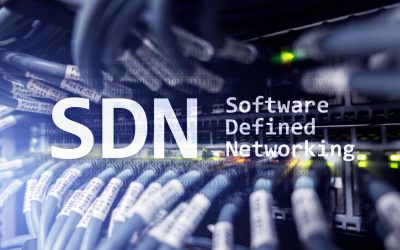Wi-Fi strikes back with 802.11be or Wi-Fi 7….
Someone rightly said that successful technologies evolve each day and are the process is continuous – the evolution never stops. Today, we are at the edge where Wi-Fi 6 has just been launched, but Wi-Fi 7 is already making headlines as the next generation of Wi-Fi. This is in line with technological innovations introduced over 20 years ago.
While Wi-Fi 6E routers are still a novelty, MediaTek, a Taiwanese chipmaker, has already performed the initial live demos of Wi-Fi 7, calling it “a true wireline/Ethernet replacement.” However, technologists believe it’s too early to dream about WiFi7, which promises a wire-free home.
Liam Dawe, Owner of GamingOnLinux, said, “We should always take new announcements about Wi-Fi beating Ethernet with a pinch of salt, as it’s been said before many times and never is it true. It sounds interesting, but real-world applications need to be seen.”
I am sure there might be many questions running the mind by now –
- What is Wi-Fi 7?
- What new capabilities and features will Wi-Fi 7 deliver?
- Why do we need Wi-Fi 7?
- When will it hit the market?
So, to clear the air, we would present a story: “All about Wi-Fi 7.”
What is Wi-Fi 7?
As you might have guessed, Wi-Fi 7 is all about higher speed, so hardware supporting the standard will be able to shuttle data via the air at a faster rate than ever. Wi-Fi 7 or IEEE 802.11be Extremely High Throughput (EHT) is the next version of the IEEE 802.11 standard. It is the successor to 82.11ax (Wi-Fi 6E/6) and will offer outdoor and indoor Wireless LAN (WLAN).
This next generation of WLAN aims to enhance the performance and services offered by Wi-Fi6/6E. The technology is still a work-in-progress and will be launched soon.
What new capabilities and features will Wi-Fi 7 deliver?
Wi-Fi 7 will use the same 2.4 GHz (2.400 to 2.495 GHz), 5 GHz (5.170 to 5.835 GHz), and 6GHz (5.925 to 7.125 GHz) frequency bands as WiFi 6E but can still provide 2.4 times its speed. It intends to encourage a transmission rate of up to 30 Gbps that is three times faster than Wi-Fi 6/6E (9.6 Gbps) and almost 10 times faster than Wi-Fi 5’s 3.5Gbps.
Key features of Wi-Fi 7 are:
- 320 MHz bandwidth and more effective use of non-contiguous spectrum
- 16 spatial streams and Multiple Input Multiple Output (MIMO) protocols developments
- Cost-efficient
- Multi-channel/multi-band aggregation and operation
- 4096-QAM (4K-QAM)
- Combining Time-Sensitive Networking (TSN) extensions for low-latency real-time traffic (IEEE 802.11aa)
- Multi-Access Point (AP) Coordination
- Higher area capacity
Wi-Fi 7 can deliver massive throughput gains, thanks to a broader channel and capacity gains from the 6GHz spectrum. Wi-Fi 7 can produce peak rates of over 40 Gbps, four times more than Wi-Fi 6E.
Application scenarios
These new features of Wi-Fi 7 will significantly advance the data transmission rate and offer lower latency. These high points will promote the development of evolving applications, including –
- Interactive telemedicine
- Video stream
- Immersive AR/VR
- Video/ voice conference
- Industrial IoT
- Online gaming
- Real-time collaboration
Why do we need Wi-Fi 7?
With the invention of WLAN technologies, enterprises and homes have become more and more dependent on Wi-Fi for network access. In recent times, developing applications have higher requirements on latency and throughput. Common examples of these applications comprise 8K and 4K videos, Augmented Reality (AR)/Virtual Reality (VR), cloud computing, online gaming (needs latency less than 5 ms), online video conferencing, and remote office.
Most importantly, Wi-Fi 7 will enhance user experience in high-density scenarios.
When will Wi-Fi 7 hit the market?
It is intended to be completed by May 2024. It is estimated that the Wi-Fi Alliance will support Wi-Fi 7 on 802.11be and introduce a certification plan as soon as the standardization process is adequately mature.
Efficiency features to drive Wi-Fi 7
The first release of IEEE 802.11be will comprise other features that contribute to higher aggregate throughput by enhancing the efficacy of access, such as:
- Restricted Target Wake Time (TWT) – Allows an access point to assign exclusive access to the medium at specified times, developing on a feature that was first defined in IEEE 802.11ah (also termed as Wi-Fi Hallow) and subsequently incorporated into IEEE 802.11ax.
- Multi-Link Operation – Enables a user device to be linked to an access point utilizing two or more radios simultaneously; for instance, a 6 GHz radio, 5 GHz radio, or 2.4 GHz radio.
Final take
Yet IEEE 802.11be EHT is not here, and various new elements are yet to be defined. The development toward the latest specification shows us the path of Wi-Fi’s technological progression – where Wi-Fi is traveling, what we can expect from it, and the pace of change.
The invention aims to fulfill the requirements of modern-day internet users who spend more time dabbling in AR and VR, streaming video, gaming online, and making video calls. How can we forget that it also fulfills the requirement of connecting dozens of devices to the same wireless router in the corner of the home?
Points to remember –
- In comparison to Wi-Fi 6, Wi-Fi 7 is 2.4 times faster on 2.4GHz, 5GHz, and 6GHz
- Lower latency and wider bandwidth even in congested environments
- Up to 40Gbps speed
Wi-Fi 7 brings extreme data speeds, higher network capacity, and lower latencies, thanks to novel abilities that are intended to support several users and devices in bandwidth-intensive environments.
Takeaway Wi-Fi 7 – the future is bright for Wi-Fi!
- The Wi-Fi 7 specification is still in progress and will get finalized by 2024.
- As per experts, Wi-Fi 7 is too much of a good thing for many users, believing the reality that the initial devices will be too expensive.
- Wi-Fi 7 will use a maximum of 320MHz of wireless spectrum.
Andy Davidson, Sr Director Engineering at Qualcomm, said, “Immersive, realistic XR (extended reality) experiences require exceptionally high-quality video with very high refresh rates that demand very high speeds and bandwidth.” He added, “Cloud gaming, social gaming, and Metaverse are additional applications that will test the boundaries of wireless technology and for which Wi-Fi 7 will deliver ample performance.”
For more such information download our latest whitepapers on networking.














